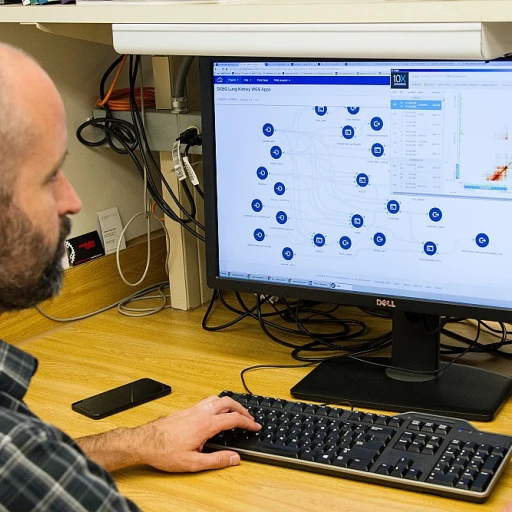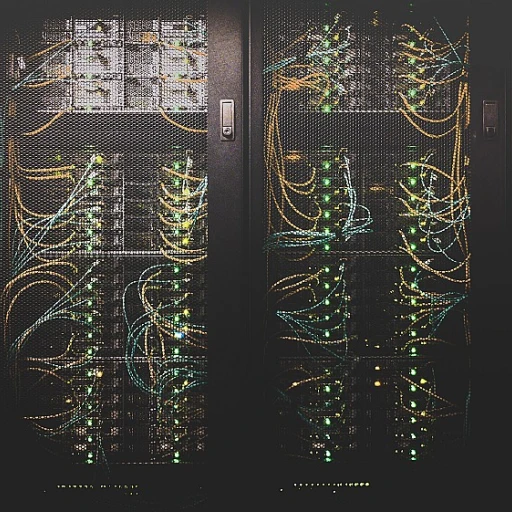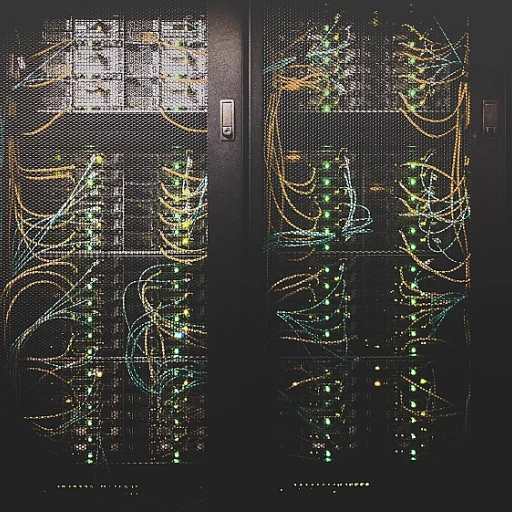Riding the SaaS Wave: What's New?
Embracing Innovations in the SaaS Environment
As we navigate the evolving landscape of Software as a Service, it's clear that new trends are continuously shaping the way businesses operate and innovate. One of the most significant shifts we are witnessing is the increased reliance on cloud technologies, transforming SaaS from a simple delivery model to an integral part of the digital infrastructure. The integration of artificial intelligence and machine learning within SaaS platforms is also becoming more prevalent, offering businesses predictive analytics and automation capabilities that were previously unimaginable. These technologies are not just enhancing existing services but are also paving the way for entirely new applications that can address complex business challenges with unprecedented efficiency. Furthermore, the emphasis on customer success and usage-based pricing is redefining business models, moving away from traditional subscription plans. This approach aligns more closely with customer needs, ensuring a mutually beneficial relationship between service providers and users. The rise of low-code platforms represents another pivotal development, democratizing software creation by enabling those without extensive programming knowledge to innovate and build applications rapidly. This trend is detailed further in our insights from Poool Agency, offering a glimpse into how these platforms are revolutionizing software accessibility and development processes. Overall, as the SaaS landscape continues to evolve, businesses that capitalize on these advancements will likely find themselves ahead of the curve, leveraging technology to drive innovation and growth.Low Code Platforms: The Future of Development
Development Tools Evolving: Harnessing the Power of Low Code Solutions
In the swiftly moving world of SaaS, businesses are constantly seeking ways to streamline operations and bring innovative solutions to market faster. One of the most significant trends emerging on the horizon is the adoption of low code platforms, which are poised to redefine the future of software development. These platforms empower users by enabling them to build applications with minimal hand-coding, thus reducing development time and costs significantly. Low code solutions offer a new level of agility and flexibility, allowing businesses to respond more rapidly to changes in the market. By simplifying the development process, these platforms enable both technical and non-technical users to collaborate seamlessly, ensuring that everyone from developers to business analysts can contribute to creating robust applications. This democratization of development is a game changer, as it lowers the barrier to entry for innovation. Moreover, with the rise of vertical SaaS targeting niche markets, the demand for rapid customization has never been higher. Low code platforms provide a perfect answer to this challenge, allowing organizations to tailor their software solutions to meet specific industry needs quickly and efficiently. In this way, low code platforms not only facilitate the creation of unique applications but also support the evolution of SaaS providers who aim to address specialized markets. To dive deeper into how these trends are shaping enterprise solutions, read more about the next chapter in enterprise software. As SaaS continues to adapt and grow, embracing low code development tools will likely become a standard best practice for companies aiming to maintain a competitive edge in their respective industries.Vertical SaaS: Niche Solutions for Specific Needs
Navigating the Rising Demand for Tailored Solutions
In the ever-evolving SaaS landscape, businesses are increasingly seeking solutions that cater to their unique needs. This shift is leading to the rise of Vertical SaaS, which offers specialized, niche solutions tailored to specific industries or business requirements. This trend is set to transform how companies engage with SaaS providers, moving away from one-size-fits-all products to more customized offerings. Vertical SaaS represents a departure from horizontal applications, enabling companies to address distinct challenges within their sectors. These niche solutions are not just about customization; they offer deep industry insights, facilitating a more efficient and effective approach to business operations. For instance, a healthcare-focused SaaS platform can provide tailored features for managing patient data, regulatory compliance, and billing, thus enhancing the overall efficiency for healthcare providers. This change mirrors a broader move towards customized digital solutions across various sectors, as discussed in the importance of building tailored systems for improved customer relationship management. By opting for Vertical SaaS solutions, businesses can leverage the expertise embedded within these platforms, gaining a competitive edge through more relevant, actionable insights. As industry-specific regulations and practices evolve, the ability to adapt quickly with specialized solutions becomes an invaluable asset. The demand for these niche solutions also aligns with other trends in the SaaS sphere, such as the shift towards low-code platforms and the integration of AI and machine learning. These advancements empower businesses to not only customize their software but also automate and refine operations with greater ease and precision. In conclusion, as the demand for more precise and industry-focused applications grows, the SaaS industry is poised to deliver innovative, specialized tools that cater to the unique demands of each sector, paving the way for a future of increased efficiency and enhanced performance across the board.AI and Machine Learning: Revolutionizing SaaS Applications
Transformative Power of AI in SaaS
As we delve deeper into the evolving landscape of SaaS, it's impossible to overlook the monumental impact of artificial intelligence (AI) and machine learning (ML) on the industry. These technologies are not just enhancing existing applications; they are fundamentally transforming how SaaS solutions are developed, deployed, and utilized.
AI and ML are enabling SaaS providers to offer more personalized and efficient services. By analyzing vast amounts of data, these technologies can predict user behavior, automate routine tasks, and even identify potential issues before they arise. This predictive capability is becoming a cornerstone of customer success strategies, aligning perfectly with the trend towards usage-based pricing models.
Moreover, AI is driving innovation in low-code platforms, as discussed earlier. By integrating AI-driven tools, these platforms are becoming more accessible to non-developers, empowering a broader range of users to create sophisticated applications without extensive coding knowledge.
In the realm of vertical SaaS, AI and ML are providing niche solutions tailored to specific industries. For example, in healthcare, AI-driven SaaS applications can analyze patient data to improve diagnostics and treatment plans. In finance, they can enhance fraud detection and risk management processes.
As businesses continue to migrate to cloud-based solutions, AI's role in optimizing these environments cannot be overstated. From improving data security to enhancing operational efficiency, AI is the backbone of modern SaaS offerings, ensuring they remain competitive and relevant in an ever-changing market.















